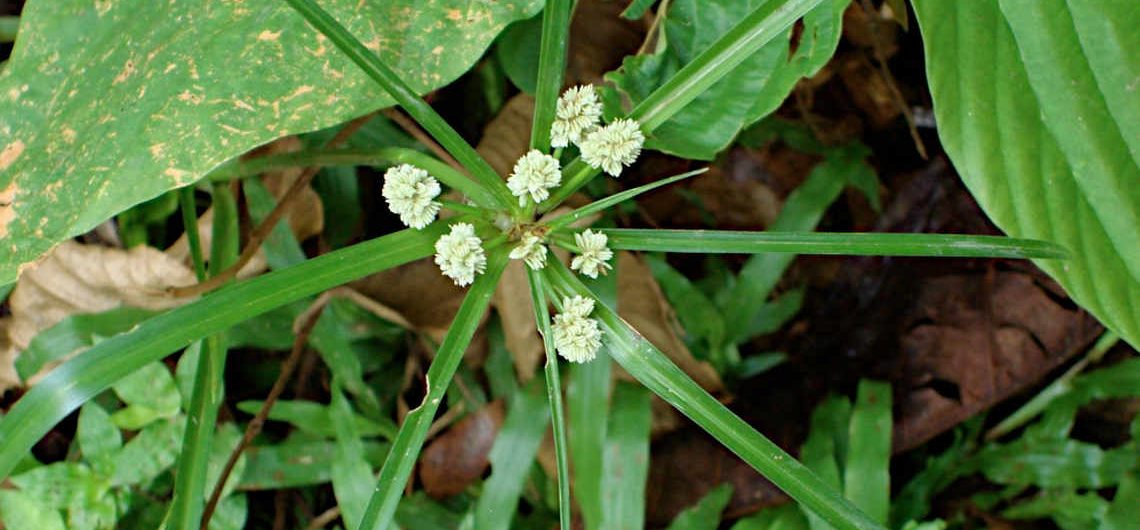Rush-like Flatsedge
Cyperus luzulae
Common in wetter areas around Panama, the Rush-like Flatsedge is a clump-forming, grass-like perennial member of the sedge family, Cyperaceae. It typically grows 20-50 cm tall, with the tallest plants reaching up to 1 meter in height. The main stem of the plant grows from short rhizomes (rootstalks). Leaves are linear, 3-7 mm wide. The bracts surrounding the inflorescence are leaflike as well, growing to 30 cm in length. Numerous spikelets grow in dense clusters approximately 1 cm in diameter, bearing up to 10 or more whitish flowers. Fruits are smooth, oblong capsules 1 mm in length and light brown in color. Cyperus luzulae flowers and fruits throughout the year.
The Rush-like Flatsedge has a number of useful purposes by humans. The crushed rhizome is used as an aphrodisiac. The strong, flexible stems can be used as twine. Parts of the plant (likely the rhizome) is mixed with Genipa americana (Jagua – family Rubiaceae) and is rubbed on hair to encourage and maintain healthy hair growth!
This distinct plant prefers wet habitats, and can be found commonly in marshes and swamps, wet fields and stream edges. It is found in the lowlands and foothills up to 1400 m. elevation, in tropical moist forest and premontane moist forest. Cyperus luzulae has a wide distribution throughout the tropical regions of Central and South America.
The genus Cyperus contains approximately 700 species of sedges distributed worldwide. The species name “luzulae” comes from “Luzula,” a genus of rushes (family Juncaceae) which this species resembles.

